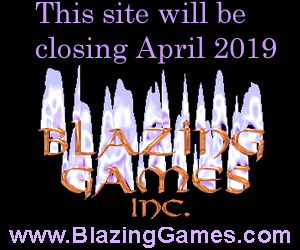

Part Three: Building the Core
Magic Artillery is going to be an extremely modular game. While this may not be the most efficient way of building the game, it will allow for the easy creation of new components for the game by anyone who wants to customize the game. Extending an existing game is a good way to improve ones programming. Despite the modularity of the design, one still needs to have a core game that makes use of the modules. This core can be broken down into a variety of components.
Unseen by the user, but vital to the game is the management components. The Resource Manager manages the games resources. The Configuration System handles configuration files. The logger tracks what is happening with the game and is useful for debugging. The player manager manages getting moves from the players (human or ai). The Game manager manages the flow of the game.
On a more visible side, we will have the landscape generator interface for landscape generating modules, the texturer makes the generated landscape look more realistic, the sprite system manages sprites on top the playfield and handles the animation. And finally, we have the spell system which forms the bases for player actions.
Part Four: Fleshing Out the Game
Now that we have the core of the game ready, we can start building the game. As mentioned in the previous part, there are many modules that make up the game. A large part of this section will be building modules that are used for the final game.
Before we start writing modules, however, we need to put in the final user controls that make the game playable. With a fully playable game we will then have an alpha version of the game.
With alpha in hand, we can then create interesting map generators and texturers. More advanced generators will require more sophisticated objects so those objects will have to be created. And finally we will have to create a large number of spells for the player.
Part Five: Network Play
The game was designed to be a multiplayer game but up to this point the only multiplayer support we have in the game is support for hot seat gaming. It would be nice if we were able to play across a network or the internet. This is, in fact, possible but we left the final implementation of the networking code for last for a very good reason. Creating a network playable game is a fairly complex task.
We will start accomplishing this task by taking a look at our options. Once we know what can be done, we will decide what is best for our situation. Readers will note that a there are already hooks in the game to allow for adding multiplayer support. In fact, this feature has been planned for since the inception of the game.
Next we will delve into creating the networking aspects of the game by building a chat system. The chat system, while partly needed for the game is a very simple task that is useful for understanding how network programming works.
With some networking knowledge under our belts, we are ready to dive into adding the network support for our game. And with that support added, we have a finished game.
| Previous | Chapter 1 Contents | Page 4 of 4 | Book Contents | Next |
About -
Privacy Policy -
Contact -
Links -
FAQ
Copyright © 2004-2006 Blazing Games Inc. All Rights Reserved
